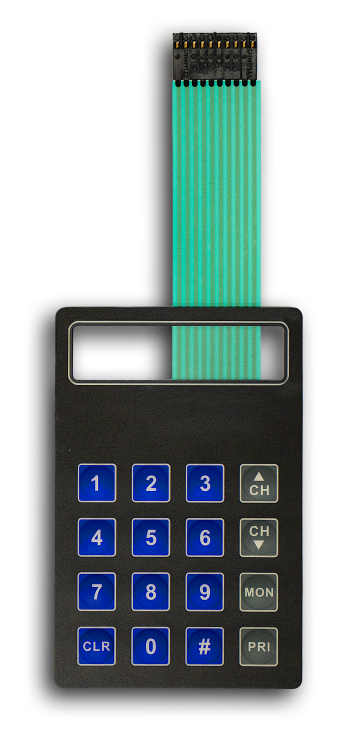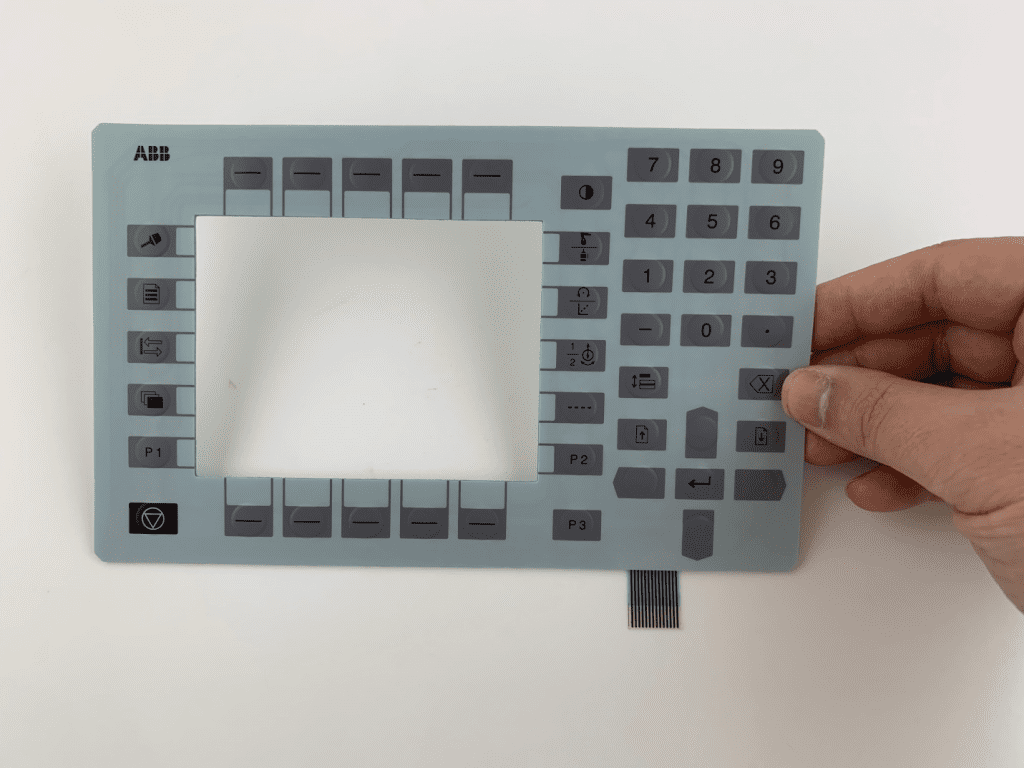How Membrane Switches Are Designed for Easy Maintenance and Repair
How Membrane Switches Are Designed for Easy Maintenance and Repair
Blog Article
Understanding the Significance of Membrane Switches in Individual User Interfaces
Membrane buttons are integral components in the design of reliable interface, helping with not only functionality yet additionally enhancing aesthetic appeal and customer interaction. Their one-of-a-kind attributes, such as resistance to personalized styles and ecological aspects, make them appropriate for a diverse selection of applications across numerous industries. As we check out the numerous benefits and future fads related to Membrane modern technology, it comes to be clear that these switches are greater than just components; they stand for a convergence of development and functionality. The ramifications of this modern technology on customer experience are worth taking a look at even more.
What Are Membrane Switches?

The spacer layer, which has glue buildings, permits the splitting up of the circuit layer from the overlay, ensuring that the button stays in a non-activated state till pressed. When stress is used to the overlay, it compresses the spacer layer, connecting the space and finishing the circuit in the underlying layer. This layout not just minimizes the physical space needed for traditional mechanical buttons however additionally enhances the resilience of the tool, as Membrane buttons are normally resistant to dirt, dampness, and various other ecological elements.
Typically located in applications varying from consumer electronics to clinical tools, Membrane buttons are important to contemporary innovation, giving a reliable and straightforward interface that straightens with modern style requirements.
Advantages of Membrane Switches
While countless switch innovations exist, Membrane Switches offer distinctive benefits that make them particularly desirable in different applications. One of the key advantages of Membrane buttons is their compact layout, which allows for space-saving applications in devices where property is limited. Their slim profile not just improves aesthetic charm yet likewise helps with lightweight building.
An additional substantial benefit is their resistance to ecological aspects. Membrane buttons are normally secured versus dampness, dirt, and contaminants, making them optimal for usage popular environments, such as clinical devices and commercial devices. This resilience expands the lifespan of the switch, minimizing upkeep expenses and improving dependability.
Moreover, Membrane buttons can be customized to fulfill details design needs, incorporating one-of-a-kind graphics and colors that boost individual interaction. Their tactile feedback options can additionally be customized to provide an enjoyable individual experience. In addition, Membrane buttons are cost-effective, specifically in high-volume applications, as they can be generated effectively.
Applications in Various Industries

In the consumer electronic devices industry, Membrane switches prevail in tools such as microwaves, washing devices, and remote controls. Their tactile feedback and visual alternatives enhance customer experience while offering a sleek, modern-day look. Furthermore, auto suppliers use Membrane buttons in control panel controls and infotainment systems, where area is limited, and user involvement is important.
In addition, the industrial sector leverages Membrane buttons in control panels for equipment and equipment, permitting for instinctive procedure in commonly severe settings. Their resistance to chemicals and dampness makes certain long life and reliability in these applications. On the whole, the adaptability of Membrane read this post here Switches contributes dramatically to their extensive usage, making them crucial in numerous technological domain names.
Design Factors To Consider for Membrane Switches

When designing Membrane switches, a number of vital factors to consider should be thought about to ensure optimal capability and customer experience. The option of products is important; choosing sturdy, high-quality substratums can improve the button's durability and resistance to environmental factors such as wetness and temperature changes.
Second of all, the design of the visuals overlay must focus on quality and ease of use. Symbols and message must be understandable, and the layout should assist in instinctive communication (membrane switches). Furthermore, tactile comments is vital; including a tactile dome or various other devices can improve the customer experience by providing physical verification of activation
Another essential factor is the switch's electrical efficiency. Designers need to guarantee that the conductive traces are correctly developed to minimize resistance and avoid signal disturbance. This includes examining the required actuation pressure and making sure compatibility with the electronic elements they will certainly user interface with.

Future Trends in Membrane Innovation
As modern technology proceeds to advancement, Membrane switches are poised to evolve dramatically, driven by innovations in materials and manufacturing techniques. One emerging pattern is the unification of innovative materials, such as flexible substrates and conductive inks, which boost sturdiness and minimize the general weight of Membrane switches. These materials not just enhance the responsive action yet additionally permit the layout of buttons that can hold up against harsher ecological conditions.
Furthermore, the integration of touch-sensitive innovations is transforming traditional Membrane Switches right into more interactive user interfaces. Capacitive touch sensing units embedded within Membrane button panels can provide a more receptive and user-friendly individual experience, lining up with the growing demand for streamlined, contemporary styles in customer electronic devices.
Furthermore, advancements in printing techniques, such as digital and 3D printing, allow quick prototyping and modification of Membrane switches. This flexibility enables manufacturers to react quicker to market demands and customer choices.
Last but not least, sustainability is coming to be a substantial focus, with manufacturers discovering green materials and processes. As these fads unfold, the future of Membrane innovation assures enhanced performance, aesthetic charm, and ecological duty, solidifying their duty in advanced interface throughout different sectors.
Conclusion
In verdict, Membrane Switches represent an important part in the layout of user interfaces, integrating functionality with visual versatility. Their advantages, consisting of resilience and resistance to ecological variables, make them ideal for diverse applications throughout different industries. Thoughtful style considerations improve user communication and experience. As developments in technology continue, the evolution of Membrane buttons is expected to more fine-tune interface, driving innovation and boosting functionality in an increasingly intricate technological landscape.
Membrane switches are essential parts in the design of effective individual look at this site interfaces, helping with not just capability yet also improving visual allure and user interaction.Membrane Switches serve as a crucial part in various user interfaces, assisting in a smooth communication between users and electronic devices.While many switch modern technologies exist, Membrane Switches deal distinctive benefits that make them specifically preferable in various applications.Furthermore, Membrane switches can be tailored to meet particular layout needs, including unique graphics and colors that enhance user interaction.In conclusion, Membrane Switches stand for an essential part in the design of user interfaces, combining functionality with aesthetic flexibility.
Report this page